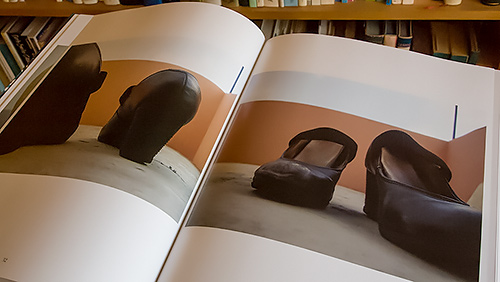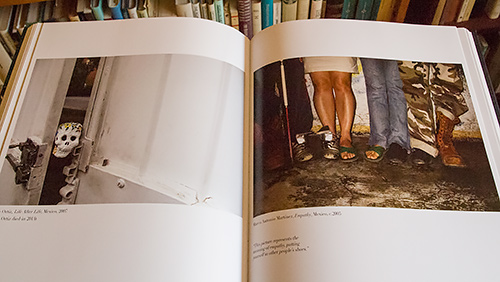Photo Corners headlinesarchivemikepasini.com
![]()
A S C R A P B O O K O F S O L U T I O N S F O R T H E P H O T O G R A P H E R
![]()
Enhancing the enjoyment of taking pictures with news that matters, features that entertain and images that delight. Published frequently.
Book Bag: The Blind Photographer




6 September 2016
Close your eyes and imagine for a moment that you have suddenly lost your sight. Would you still pick up your camera? Or would you feel as if photography were now impossible?

We asked ourselves that question as we struggled to evaluate The Blind Photographer by Julian Rothenstein and Candia McWilliam. It's a 213-page anthology of the work of over 50 blind or partially-sighted photographers from around the world.
Part of the answer is to acknowledge that we would not be practicing photography the same way. Without the ability to see our photographs, we would not be able to edit them, to do any post processing like making fine adjustments of various sliders to recapture shadow or highlight detail.
But in this book, you will see how photography is more than post processing.
The first issues we wanted explained had to do with the practicalities of shooting. And in the short essays introducing the various sections of the book, we gleaned some answers.
Aarón Ramos, who is blind, explains, "I use my sense -- hearing, touch, taste and smell -- when taking pictures. When I touch the camera lens I create an imaginary line from the lens to the object I am taking a picture of; I create the picture in my mind, I feel it and construct it to communicate feelings to the normal-visual world."

Ramos. 'The beauty of life in the appearance of dying,' he says.
He also relies on a sighted friend to help him find subjects like insects. His broken plate series "carries the message that all of us have something to give to the world, even as we are aware that we live in a process that comprehends death."
For the partially-sighted Alberto Loranca, the process is different. "I can distinguish between light and shadow and I pay a great dal of attention to light in order to take pictures; I calculate the amount of light needed using trigonometry."
But for many of these photographers the process involves imagining a scene, constructing it before them and relying on the camera's automatic modes to faithfully render what they have arranged.

Meléndez. 'Now that I am not able to see, photography helps me to make images and share emotions,' she says.
Alicia Meléndez's images of shoes are a good example of that approach. "I enjoy constructing images in my mind, and when I resolve something and take the picture I feel that I can see."
In some cases, these conceptual images require elaborate staging. Marco Antonio Martínez's Empathy from 2005 required four people with, presumably, similar shoe sizes to line up wearing a right shoe matching the left shoe of the person to their right.

Ortiz, Martínez. Rubén Ortiz's 'Life After Mexico,' 2007 (left) and Martínez's 'Empathy,' 2005.
"This picture," he explains, "represents the meaning of empathy, putting yourself in other people's shoes."
Even in this hand-picked selection there are small if understandable imperfections of focus or composition. But the images convey meaning. They are conceptual works realized with the help of the modern imaging technology we all enjoy, but which do not guarantee an interesting image.
These photographers, all of whom give a new spin to the concept of "visualization," know how to create an interesting image.
We would, we finally answered our question, continue to take photographs if we woke up one morning without sight. But we could only answer the question after we had seen what these blind photographers had already managed to accomplish.
The Blind Photographer by Julian Rothenstein and Candia McWilliam, published by Princeton Architectural Press, 213 pages, $45 (or $31.40 at amazon.com).